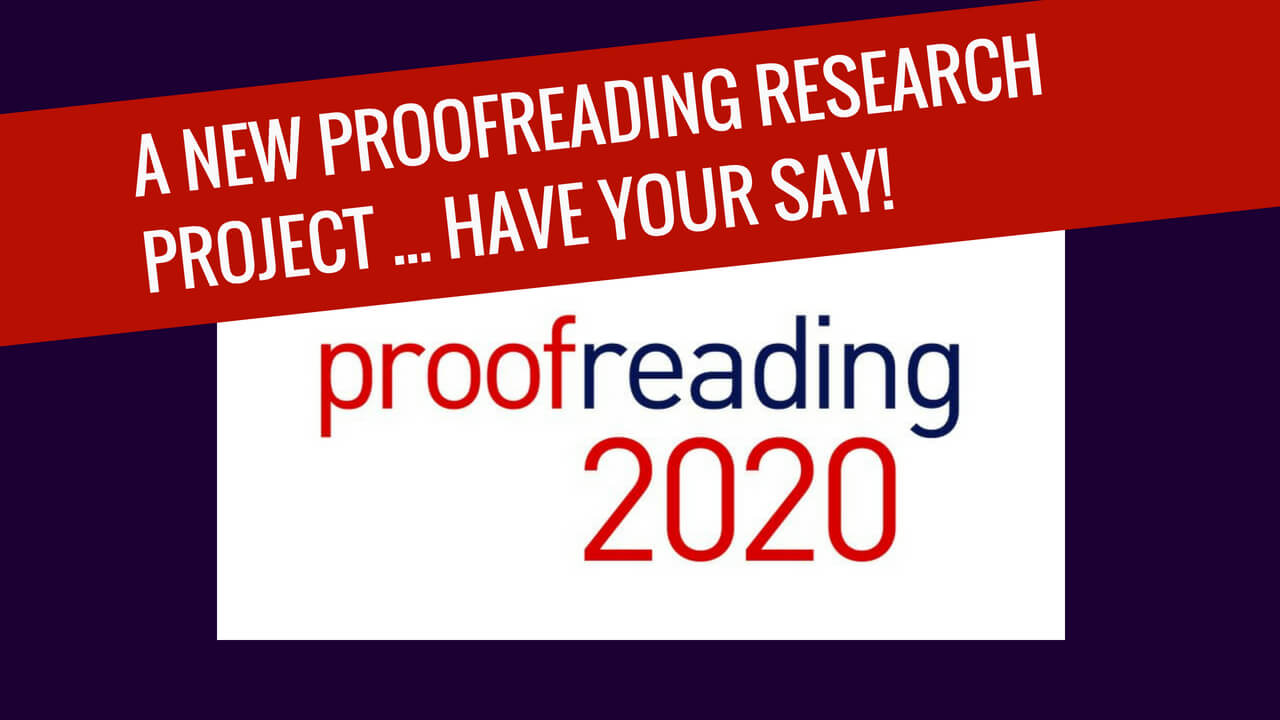|
Have proofreading symbols passed their use-by date? It’s a controversial question, but one that we definitely need to ponder. So, as an unconventional ‘celebration’ of 30 years in publishing, Melanie Thompson is setting out to answer this question – and she needs your help ...
Over to Melanie ...
A few months ago a colleague asked me whether (UK-based) clients want proofreaders to use British Standard proofreading symbols or whether they prefer mark-up using Acrobat tools on PDFs. ‘Good question,’ I replied. ‘I hope to be able to answer that later this year.’ That probably wasn’t the answer they were expecting. The widely different expectations of clients who ask for ‘proofreading’ has been niggling at the back of my mind for a couple of years. What's changed in three decades I have been a practising proofreader for 30 years, I’ve managed teams of editors and proofreaders, and I’ve been a tutor for newcomers to our industry. Yet I still learn something every time I proofread for a new client. It’s several years since I was last asked to use BS symbols for a ‘live’ project,* but I use them a lot on rough draft print-outs – because they’re so concise and … well, let’s face it, to some extent those symbols are like a secret language that only we ‘professionals’ know. I like to keep my hand in. But proofreading is now a global business activity, and ‘proofreading symbols’ differ around the world – which kind of defeats their original objective. And now so many of us work on Word files or PDFs (or slides, or banner ads, or websites or … ) and there are other ways of doing things. This all makes daily work for a freelance proofreader a bit more complicated (or interesting (if challenges float your boat). We might be working for a local business one day and an author in the opposite hemisphere the next. It’s rare, but not unheard of, to receive huge packets of page proofs through the mail and to have to rattle around in the desk drawer to find your long-lost favourite red pen. Usually, however, things tend to arrive by email or through an ftp site or a shared Dropbox folder. Digital workflows
The ‘digital workflow’ is something we’re now all part of, whether we realize it or not. But clients are at different stages in their adoption (or not) of the latest tools and techniques, and that leaves us proofreaders in an interesting position.
We need to be able to adapt our working practices to suit different clients; ideally, seamlessly. For that, we need to understand what the current processes are, and what clients are planning for the future. And that’s where I need your help. A new research project: proofreading2020 I’ve launched a research project, proofreading2020, to investigate proofreading now and where it might be heading.
The study begins with a survey, asking detailed questions about proofreading habits and preferences. Once the results are in, I’ll be conducting follow-up research for case studies and, early in 2019, publishing the results in book form.
You can find out more and complete the survey at proofreading2020. It's open now, and closes on 30 June 2018. Almost 200 proofreaders, project managers and publishers have already completed the survey. Several have contacted me to say it was really useful CPD, because it made them think about how they work and why they do things. So I hope you’ll be willing to set aside a tea-break to fill it in. It takes about 20 minutes to complete, but it’s easy to skip questions that aren’t relevant to you. There are only a handful of questions (at the beginning and end) that are compulsory (just the usual demographics and privacy permissions). Beyond that, the sections cover the following:
Your chance to join in!
Find out more and complete the survey at proofreading2020.
Don't forget, the closing date is 30 June 2018. * If a client does ask for BS symbols, I recommend downloading Louise’s free stamps for use on PDFs – they will save you a lot of time and help you deliver a neat and clear proof.
Melanie Thompson is an Advanced Professional Member of the Chartered Institute of Editing and Proofreading (CIEP) and a CIEP tutor.
Louise Harnby is a line editor, copyeditor and proofreader who specializes in working with crime, mystery, suspense and thriller writers.
She is an Advanced Professional Member of the Chartered Institute of Editing and Proofreading (CIEP), a member of ACES, a Partner Member of The Alliance of Independent Authors (ALLi), and co-hosts The Editing Podcast. Visit her business website at Louise Harnby | Fiction Editor & Proofreader, say hello on Twitter at @LouiseHarnby, connect via Facebook and LinkedIn, and check out her books and courses.
0 Comments
Leave a Reply. |
BLOG ALERTSIf you'd like me to email you when a new blog post is available, sign up for blog alerts!
TESTIMONIALSDare Rogers'Louise uses her expertise to hone a story until it's razor sharp, while still allowing the author’s voice to remain dominant.'Jeff Carson'I wholeheartedly recommend her services ... Just don’t hire her when I need her.'J B Turner'Sincere thanks for a beautiful and elegant piece of work. First class.'Ayshe Gemedzhy'What makes her stand out and shine is her ability to immerse herself in your story.'Salt Publishing'A million thanks – your mark-up is perfect, as always.'CATEGORIES
All
ARCHIVES
July 2024
|
|
|
|


















 RSS Feed
RSS Feed





